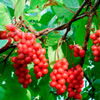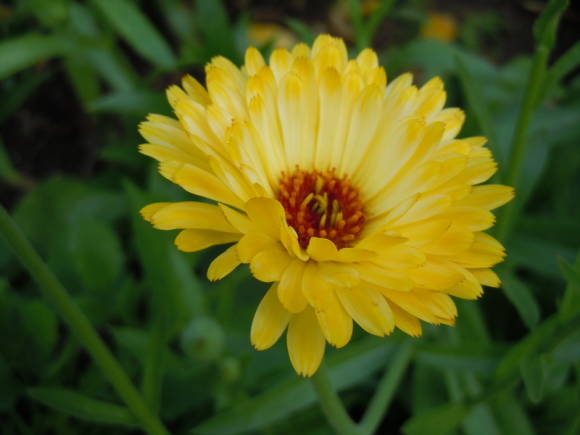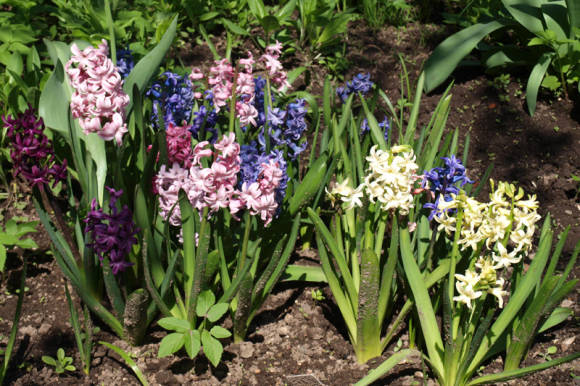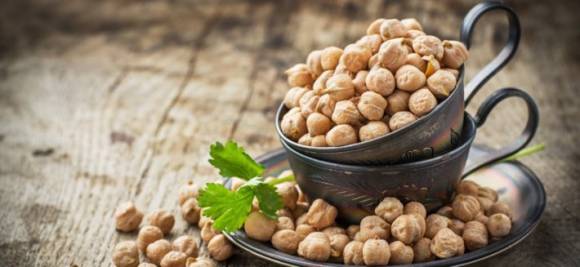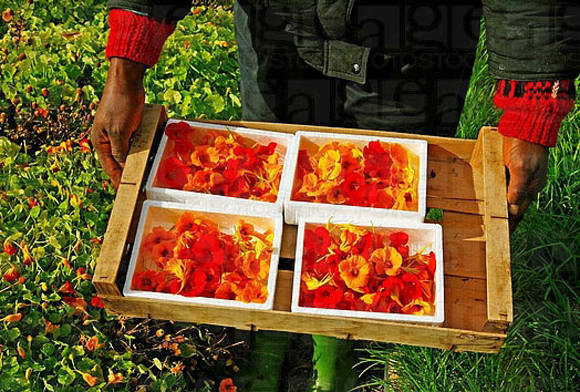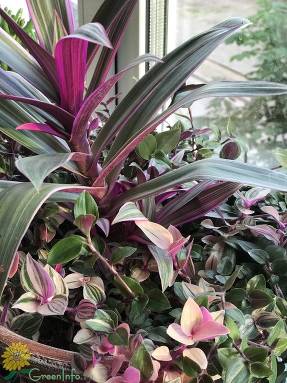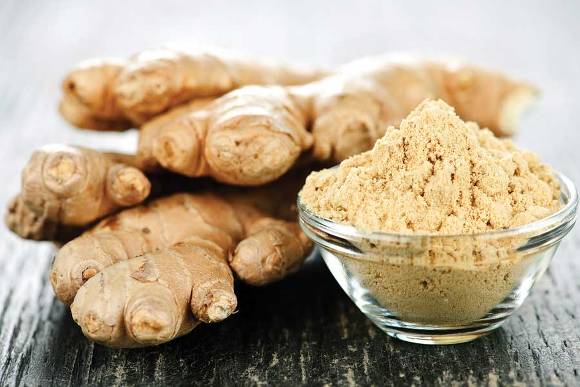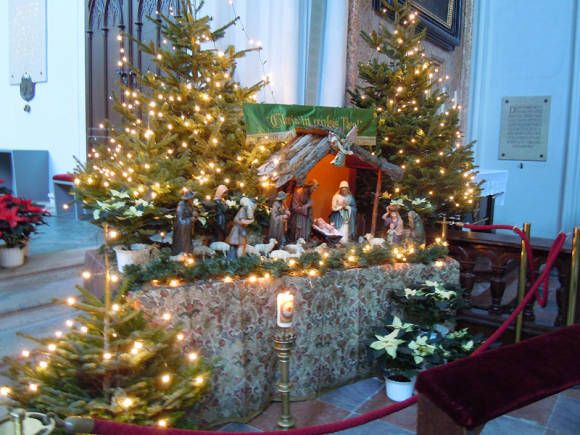Breadfruit (Artocarpus altilis) - relict plant from the Mulberry family (Moraceae)... The family unites 2 genera: Artocarpus, numbering 47 plant species, and the genus Treculia of 12 types. All these plants can be attributed to breadfruit, but we are interested in the main breadwinner of the Polynesians Artrocarpus altilis.
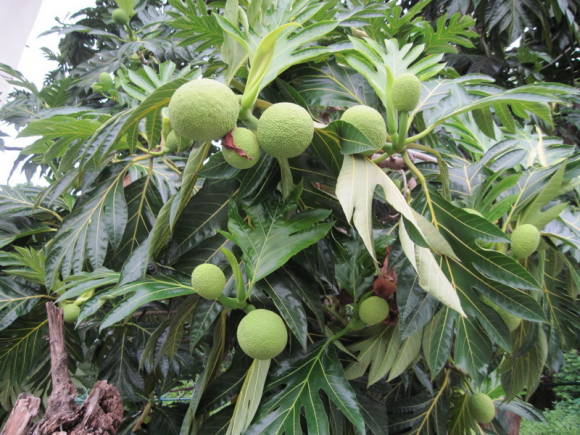 |
There were times when bread grew only on trees, and to obtain it, it was not necessary to sow the fields with cereals. Large loaves still grow right on the branches of this amazing tree. Once the breadfruit was ubiquitous on Earth: prints of leaves and flowers of this relic were found in the rocks of not only southern, but also northern countries such as Greenland. Global cooling has reduced the distribution area of breadfruit to the tropics.
Now New Guinea is considered the birthplace of this plant. It was mentioned in their writings by Theophrastus (about 372 -287 BC) and Pliny the Elder (about 23 - 79 AD) Europeans first learned about him from William Dampier (1651-1715), the famous pirate who became the captain of the British fleet and sailed three times around the world. He described the use of the breadfruit like this: “They are as big as a penny loaf of bread baked with flour worth five shillings a bushel. Residents bake them in the hearth until the crust is blackened, then the crust is removed, and soft white flesh remains under the delicate thin skin, similar to crumbly bread. There are no rocky inclusions. But if the pulp is not eaten right away, then in a day it becomes stale and becomes hardly edible. "
Such an amazing way of feeding interested many researchers, including James Cook (1728-1779). During the stay of his ship off the coast of Tahiti in 1768-69. the captain drew attention to the funeral rite of the Tahitians, who supplied the dead with the most necessary - melon-like fruits and water. Here is what Jules Verne writes about this in the book “Navigators of the 18th century”: “The bodies were left to decompose in the open air and only skeletons were buried ... Several coconuts in the form of a rosary hang at the open edge of the canopy; outside there is half a coconut shell filled with fresh water; a bag with several slices of breadfruit is suspended from the post.
Learning that these fruits replace bread for the natives, the botanist of the Cook expedition Joseph Banks immediately appreciated the possibilities of using this plant as a cheap source of food. Returning to England, he achieved the organization of a special expedition for the seedlings of this tree. He managed to convince the government that the cultivation of breadfruit in the colonies of the West Indies would allow to cheaply feed slaves on the plantations. They listened to his words, because Sir Joseph Banks advised the king on plant maintenance in the Royal Botanic Gardens, Kew, where exotic plants were brought from all over the world. The captain of the new expedition was tasked with transporting seedlings from Polynesia to the Antilles.
In 1789, the ship "Bounty" sailed to Tahiti; it was specially prepared for the transportation of seedlings. But the expedition did not fulfill the task: the seedlings were loaded onto the ship, but a mutiny broke out on the ship. The mutinous crew sent Captain Williams Bligh with 18 sailors in a rowboat out to sea. The ship headed for one of the islands in the Pacific Ocean. Instead of returning to the Old World, where the death penalty awaited the rioters, the team organized a free colony on Pitcairn Island. Captain Bligh managed to survive this alteration and get to the ground, having covered over 6710 km. After returning to England, he again set out for the breadfruit, and in 1793 the ship Providence delivered the seedlings to the botanical garden of St. Vincent Island in the West Indies. In 1817, William Bligh died in Australia, with the rank of vice admiral, and a breadfruit was engraved on his tombstone.
 |
News of the search for the British reached their constant competitors, the French. La Billardier's group, sent in search of the missing La Perouse expedition, delivered breadfruit seedlings to the botanical garden of revolutionary Paris in 1792. From Paris, the breadfruit was sent to Jamaica. Thus began the breadfruit's "career" as a supplier of cheap food in the colonies.
Let's take a closer look at this plant.
Genus Artocarpus includes 47 plant species currently growing in the tropics of their native Oceania and the developed Southeast Asia.
A breadfruit tree with a smooth gray bark reaches a height of 30 m and resembles an ordinary oak in silhouette. The tree can look very diverse: on one plant there are leaves with varying degrees of pubescence, both whole and pinnately dissected. Branches also exist in two versions: some are long and thin, with tufts of leaves at the end, others are thick and short with leaves along the entire length. Yes, and this tree behaves like evergreen, then like deciduous, depending on the climate. Begins to bear fruit at 4-5 years.
The breadfruit is a monoecious plant. Nondescript small flowers do not adorn it. Male flowers carry a single stamen and form large club-shaped inflorescences. The pollen matures 10-15 days after the formation of the inflorescence, after which it is sprayed within 4 days.
Odorless, greenish inconspicuous female flowers are collected at 1500-2000 in rounded inflorescences. They ripen somewhat later than male ones and can be pollinated within 3 days after inflorescence formation. Flowers in an inflorescence open sequentially, starting from the basal, i.e. upwards. Pollinated by wind and winged bats Pteropodidae. After pollination, the tissue of the perianths and the axes of the inflorescences grow so much that the resulting fruit completely absorbs the developing drupes. Thus, seeds with a length of 2-3 cm are immersed in the outer layer of the infertile tissue. Inflorescences and fruits are formed at the ends of the branches. Ripening fruits weigh 3-4 kg.
 |
It should be noted that seeds in compound fruits are found only in the wild form (it is also called "bread nut"). The cultivated form reproduces by layering and does not contain seeds in the fruit. This indicates a long history of plant cultivation, the center of origin of which is considered to be the Indo-Malay archipelago. Interestingly, the inhabitants of Micronesia and Polynesia prefer the seedless form, while in New Guinea they prefer the wild-type fruits.
The breadfruit bears fruit for 9 months a year from November to August. The fruits ripen on the tree sequentially, from bottom to top. After fruiting, the tree actively grows and gains strength for 3 months before the next flowering, growing by 50-100 cm during this time. drought, when the amount of precipitation drops to 25 mm per month. The temperature range in which the breadfruit is able to survive is from +40 degrees to 0.
As the fruit ripens, the merged mass of overgrown perianths and bracts becomes more and more fleshy. The fruits are oval and melon-like, 15-25 cm long and about 12-20 cm in diameter. The color of the peel gradually changes from light green to yellow. Over time, it is additionally colored by latex protruding and drying on the surface, which is contained in all parts of the plant. The peel of the fruit can be smooth or bumpy, covered with thornless outgrowths. They can reach 3 mm in height and 5 mm in diameter, the outgrowths are formed from separate flowers tightly planted on the axis, elongated into a tube, each of which, expanding, forms its own "pimple" or polygonal mesh cell on the smooth surface of the fruit. In the middle of the outgrowth or cell, a brown scar is visible from the dried stigma of the flower.Seeds 2-3 cm in size are covered with a thin dark brown skin 0.5 mm thick and an inner translucent thin membrane.
 |
The pulp of the fruit, as it ripens, changes color from starchy white to cream or yellowish. One tree can ripen from 150 to 700 fruits. If we take into account that the life of a breadfruit is 60-70 years, then more than half a century of breadfruit plantations can yield yields from 16 to 32 tons per hectare, which corresponds to wheat yields, but with minimal costs for growing, harvesting and processing.
Breadfruit grows singly or in clusters on top of branches. The calorie content of 100 g of breadfruit is 103 kcal. Their nutritional value (per 100 g): proteins - 1.07 g, fats - 0.23 g, carbohydrates - 27.12 g, sugars - 11.0 g, fiber - 4.9 g.
The seed kernels are also edible, their nutritional value is higher. The calorie content of 100 g of seeds is 191 kcal. The nutritional value of 100 g of seeds is: proteins - 7.40 g, fats - 5.59 g, carbohydrates - 29.24 g, fiber - 5.2 g.
Nowadays, breadfruit is highly regarded as a low fat dietary product.
Breadfruit is edible at any stage of ripening. Unripe fruits are prepared and stored as vegetables, and ripe fruits, in which starch, of which the fruits contain up to 30-40%, turns into sugar, are used as fruits. Small unripe fruits 2-6 cm in diameter are boiled, salted and pickled, getting a product that tastes like artichokes. Ripe fruits are used to make puddings, cakes and sauces.
High yields create the problem of preserving and processing surplus crops. The Tahitians have long ago decided for themselves this question. They pick the fruit with forked sticks, pierce the tough rind so that the pulp of the fruit begins to ferment. After a day, the fermented fruits are cleaned of tough peel and placed in a pit lined with stones and banana leaves, compacted, covered with leaves and covered with stones. The resulting fermented pasty mass can be used throughout the year, this is especially true during the absence of fruits from August to November. The dough is usually pounded and kneaded, adding water and pieces of fresh fruit. In this form, the natives of the Marquesas Islands eat this spicy dish, calling it poi-poi, the smell of which discourages the appetite of Europeans. The dough can be baked by wrapping the leaves. The crumb of the resulting "loaves" tastes like bread.
In modern conditions, fruits intended for long-term storage are fermented, freeze-dried, dried, and converted into chips or starch.
Breadfruit is comparable in calories to bananas and potatoes, in part similar in taste due to its high starch content. In addition, the fruits are sources of potassium, calcium, magnesium and vitamins of groups A, B and C. The anti-scurvy properties of breadfruit have been described by ancient seafarers.
Absolutely all parts of the plant are used. The seeds are usually boiled or fried. They contain 8% protein and very little fat compared to nuts, which taste and texture they resemble.
 |
Everything that remains after human use is willingly eaten by pets. The leaves are used as food for herbivores, and elephants are also very fond of them. Bark and twigs are eaten by horses. Such food addictions force to carefully protect young trees from animals wishing to feast on them.
Dried inflorescences of male flowers are used as a repellent; when burning, its smoke drives away mosquitoes and midges. But not all inflorescences manage to dry out, because they are also pickled and candied fruits are prepared from them.
The golden-yellow wood of breadfruit is used in the furniture industry, as well as for the manufacture of musical instruments, over time it darkens. The wood is very light, almost twice lighter than water (its density is 505-645 kg / m3), therefore it serves as a material for surfboards. Another highly valued quality of this wood in the tropics is that it is not eaten by termites.
Trunks are precious fuel in the tropics. The inner bark layer is used to make a soft fabric from which bedding, loincloths and ritual garments are sewn. Strong ropes are made of bast, which are not affected by moisture.
Gum treats boats from leaking. The latex found in all parts of the plant is used like chewing gum and as an adhesive.
Local folk medicine actively uses medicines provided by the breadfruit. Flowers can relieve toothache. Latex is rubbed into the skin for fractures and dislocations to relieve inflammation. For the treatment of fungal diseases, the medicine is obtained from the leaves. Diseases of the gastrointestinal tract - diarrhea, abdominal pain, dysentery - are treated with an aqueous solution of latex or an extract from flowers. Latex, mixed with crushed leaves, is used for ear pain, bark - for headache, roots - as a laxative and for the treatment of skin and fungal diseases. Modern research has shown that the bark has a cytotoxic effect on tumor cells, and extracts from the roots and stems have antimicrobial activity against gram-positive bacteria.
Currently, huge long-lived trees are integrated into the farming system and get along well with the yams, bananas and some commercial crops, in particular, black pepper and coffee, which are cultivated under them, providing them with protection from the scorching sun.
If in the middle latitudes "bread is the head of everything", then in the tropics we can say that everything is the head of a breadfruit, which simultaneously satisfies many human needs and is used in cooking, agriculture, woodworking and medical industries.
